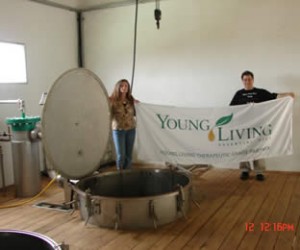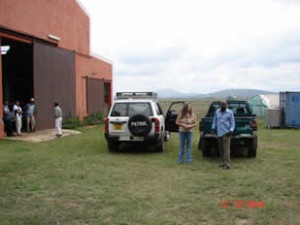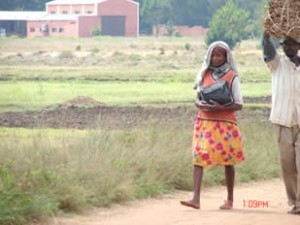Gary Young Travel Update – Madagascar
Marc Schreuder, a lead researcher at Young Living, recently documented his trip with Gary Young to Madagascar.
As one of the world’s leading growers and distillers of aromatic plants for essential oils, Gary Young has long understood that guaranteeing oil quality is not just a matter of subjecting essential oils to analytical equipment; it starts with an intensive understanding of the collectors and growers of the herbs, inspecting fields, monitoring distillation, and collecting samples. This is why Gary Young has insisted on visiting and inspecting all farms and facilities providing essential oils to Young Living.
The most recent extension of this mandate was Gary’s scheduling of site inspections to different essential oil producers in Madagascar and Kenya, where a number of essential oils are produced, including vetiver, ylang ylang, clove, ravensara, black pepper, myrrh, and frankincense. He asked Young Living researchers, Mary Lou Jacobson, and Marc Schreuder, to accompany him during these 10 days.
Proper plant identification and distillation are critical to producing a therapeutic-grade essential oil. Local Madagascar producers often distill an essential oil from a tree known as Cinnamomum camphora and call this “Ravintsara,” substituting it for authentic Ravensara aromatica essential oil. While Cinnamomum camphora and Ravensara aromatica produce essential oils with similar chemistries, the two species have markedly different therapeutic effects. Similarly, clove bud essential oil is often watered down or “extended” with inferior clove leaf or stem essential oil, rendering the resulting composite inferior in therapeutic effects.
The second essential oil distillery that Mary Lou and Marc visited used a wood-fired boiler system to generate steam that was piped into two 3,000-plus liter stainless steel extraction chambers. At this operation, leaves of true Ravensara aromatica were being distilled in one vessel and clove buds from Eugenia caroyophyllata (also known botanically as Syzygium aromatica) in the other. Bags of black pepper (Piper nigrum) were also awaiting distillation. Marc inspected the sacks of clove for signs of either stems or leaves, but found nothing but pure clove buds.
Master Distiller Guillermo explained that he had developed a special triple separation system at this distillery, which allowed a more precise and pure extraction of the botanicals. As the Ravensara essential oil rose to the top of the separator, Marc tapped off a 50-milliliter sample to take with him back the Young Living labs as a reference sample for subsequent analysis and comparisons.
Guillermo also explained how he was able to identify foliage from true Ravensara and distinguish it from “Ravintsara” from the camphor tree. “People try to substitute one for the other,” he stated. “Both are sustainably collected…Ravintsara from plantations and Ravensara from wild growths. The farmers collect the leaves and sell them by the kilo. But it is important for me to know which species I am distilling.”
Regarding black pepper and clove, all botanicals are purchased from local collectors, who venture into forests and virgin vegetation to collect raw materials from wild growths. Even though not technically “certified organic,” the peppercorns, clove buds, and other aromatics actually exceed any organic standards because they are collected far from highways, roads, factories, and pollution that can contaminate the earth and environment.
Gary Young and Young Living continue to remain vigilant, ensuring that only the most pure raw materials are used in the production of essential oils. It is this commitment to superior quality that allows thousands to enjoy the health benefits these natural oils.





Would you like to share your thoughts?
Your email address will not be published. Required fields are marked *